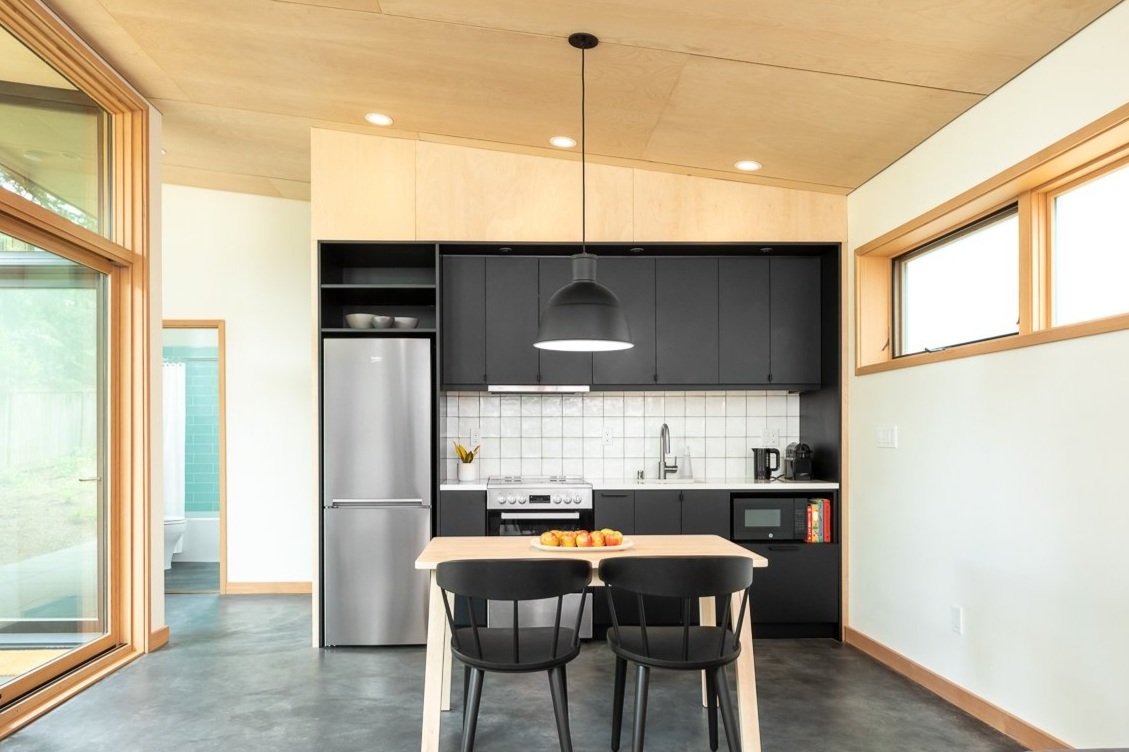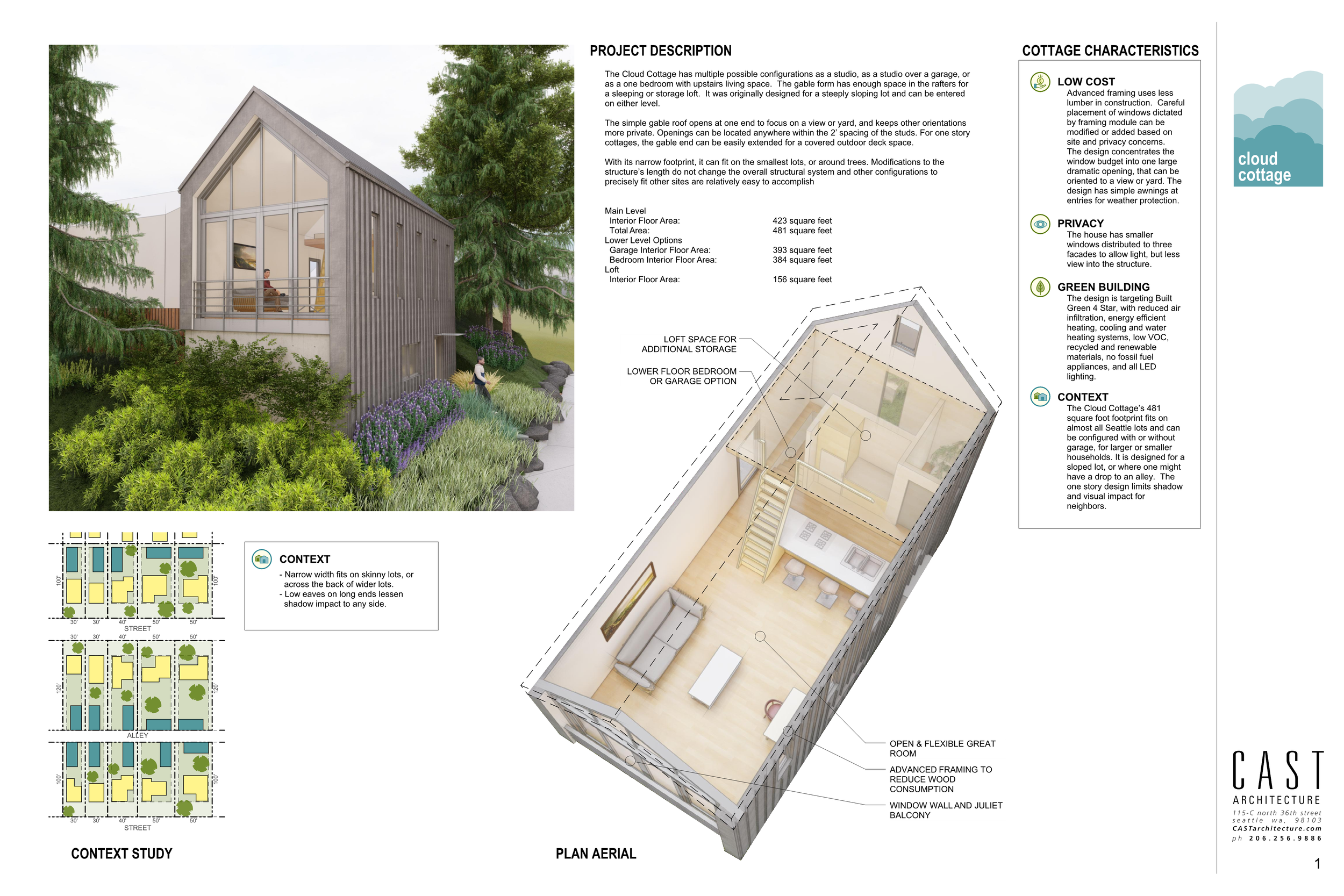A Seattle Detached Accessory Dwelling Unit
Sustainable living in a tiny home
CAST is featured in Porch’s round-up: Everything About Tiny Living: Tips From the Experts
We are rethinking space and home. CAST believes tiny homes, accessory dwelling units (ADUs), and backyard cottages are inherently sustainable building options, as well as sensible answers to the housing crisis. Tiny homes require fewer materials to build, create less waste, and use less energy to power, heat, and cool when compared to traditional single-family houses.
In addition, people who live in tiny houses will own fewer possessions and spend less overall. Downsizing will influence lifestyle in many ways—streamlining possessions, becoming more mobile, and building financial security—which leads to a lower carbon footprint. Typically, as one moves into a tiny home, other segments of life change positively as well including overall consumption of goods, services, and even food. And this, in turn, reduces the impact on the environment. Specifically, with carbon footprint in mind, the factor that will have the most impact is the size of the home.
Good design matters. Our backyard cottages are designed to be energy efficient, low cost, and built for privacy within their context. Daylighting is important in every home and especially in small spaces. Effective storage is essential. Layering and overlapping are key to designing successful small spaces while using different materials will create well-defined areas. Plan to maximize every square foot in common living areas and integrate outdoor space. Covering outdoor space makes it feel like an extension of the home, without having to heat or cool it.
Density and more efficient land use are critical to addressing our housing crisis, climate change, and persistent inequities in access to housing. Modest infill houses like tiny homes, ADUs, and backyard cottages are a key strategy to empower citizens to provide new housing, build generational wealth, and leverage taxpayers’ investment in infrastructure, transit, schools, and parks. Plus, these homes could create an affordable housing inventory.
Photo, above: Cindy Apple Photography
Photo, below: Benjamin Drummond Photography
A functional and sustainable tiny home in Washington’s Methow Valley
See more of this tiny home on our website.























